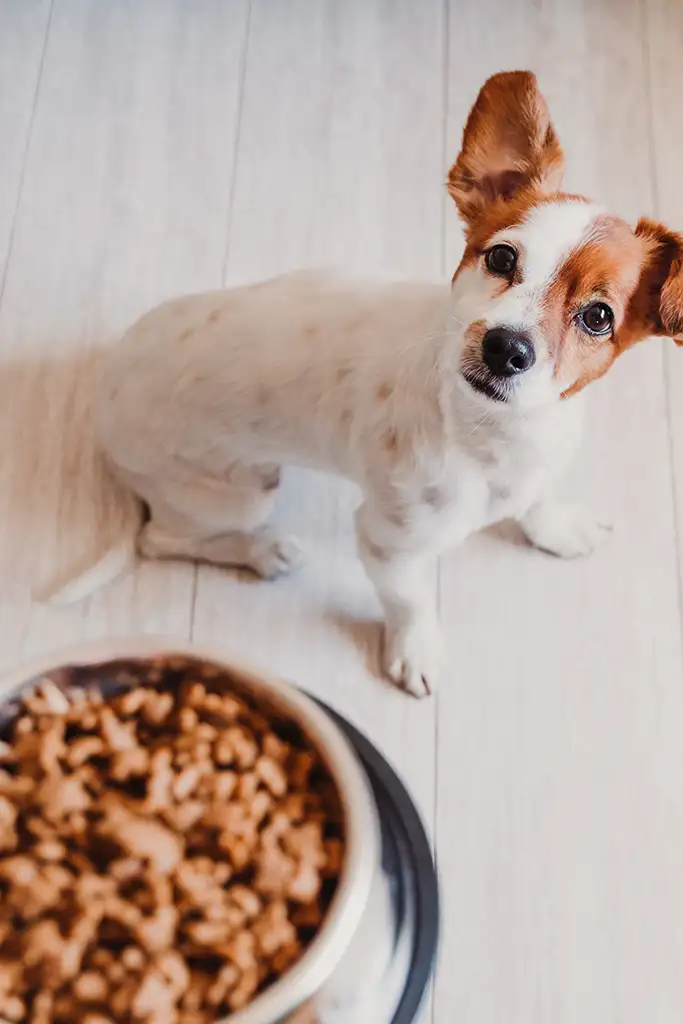The German Cattle Dog : What To Know About This Blue Heeler German Shepherd Mix
Quick Guide
This guide gives an in depth look at this crossbreed, followed by detailed information on both parent breeds.
Stay tuned to the end of the article where we will give you some valuable tips to help you decide for yourself if this is a good mix for the next member of your pack.
Blue Heeler German Shepherd Mix
Temperament
It is important to remember that like all hybrid dogs, the genetic makeup of puppies will be a random combination of characteristics from both of the parents.
You should expect relatively stable characteristics when both parent breeds share common tendencies, and variation where they don’t.
In the case of this hybrid combination, both parent breeds share intelligence, high work ethic, endurance, strength, herding abilities and a tendency to be a bit headstrong.
When you cross the GSD with the ACD, you almost always get a smart canine that is best suited to intense work or play under the direction of a strong leader with training experience.
These athletic dogs have very high exercise requirements to really shine. If allowed to become bored, they are likely to become destructive.
Although the ACD is not known for being terribly vocal, GSDs do have a bad reputation for incessant barking if left alone for too long.
Size
The Blue Heeler tends to be short and stocky with well developed muscles, ready to take on steer. The German Shepherd is also a powerful canine, although longer, taller and leaner over all.
This is a designer dog that can be tough to predict the adult size of any puppy in the litter as a result.
Anywhere from 18-26” and 35-90 lbs. is within the range you can expect.
Coat and Appearance
The coat of the parent breeds could hardly be more different.
The GSD has a thick, medium length, double coat with a massive annual shed to be expected each Spring. The ACD has a shorter coat, but still retains a weather resistant double coat.
A wide variety of color variations are available in this cross breed.
The blue speckled look of the Blue Heeler combined with the black and tan coloration of the German Shepherd can take many forms.
Health and Life Expectancy
Overall this tends to be a hearty hybrid. There is not much overlap in the parent breed’s congenital problems, which helps avoid them when crossbred. A reasonable life expectancy is 11-14 years.
Pros/Cons
PROS
- Expect a tireless worker that looks forward to having a job to do.
- This is a hybrid dog that will learn fast with positive reinforcement training and strong leadership.
- Strength and fearlessness are both qualities that the parent breeds share. This is no wilting lily!
- Both parent breeds have a reputation for loyalty and protectiveness, making them good as potential guard dogs.
- Alert and adventurous, a German Shepherd and Australian Cattle Dog mix is going to be ready for anything!
CONS
- This cross has a tendency to be headstrong and stubborn, especially if they sense a lack of leadership.
- Because of the ACD’s poor reputation with small children and other canines, they should be supervised with kids and other dogs.
- Grooming needs for GSDs are high, including an annual Spring molt of their substantial undercoat. This could translate into high grooming needs in this hybrid.
- Expect a dog that is somewhat wary with strangers at first. Socialize early and often.
- A German Shepherd and Blue Heeler mix is very likely to become destructive or neurotic if they are not regularly mentally and physically stimulated.
For more Blue Heeler & German Shepherd Mixes check out these articles:
- Blue Heeler & Australian Shepherd Mix
- Blue Heeler & Border Collie Mix
- Blue Heeler & Lab Mix
- Golden Retriever & German Shepherd Mix
- German Shepherd & Australian Shepherd Mix
- Corgi & German Shepherd Mix
Blue Heeler German Shepherd Mix | The Cattle Dog Parent Breed
This member of the herding group is also known as Australian Cattle Dog (ACD), Red Heeler (actually, this is just a color variation of the breed), or Queensland Heeler. Rest assured all of these breeds refer to the same dog, a tenacious and tireless cattle herding dog, the Blue Heeler.
History
The main challenge in the development of this breed has been to cultivate the body and tenacity to handle the strength and willfulness of cattle, while being lightweight enough to have endurance in the rugged Australian Outback, and being trainable enough to follow instruction.
Stock from many different breeds went into this masterful cattle handler.
Smithfield’s (old English herding dogs), Blue Smooth Highland Collies, Bull Terriers, Dalmatians and Black and Tan Kelpies are among the breeds that contributed to the Australian Cattle Dog.
In addition, the wild Australian dog, the Dingo, was crossbred in at a few different times during the development of this breed.
Since arguably no dog is better adapted to the harsh environment of the Outback, this infused the breed with the tough endurance it is known for today.
Temperament
ACDs are tenacious and intelligent dogs that have a bit of a stubborn streak.
They are often extremely alert and can become neurotic and pushy if not adequately stimulated and trained.
They are known to be loyal to their family, but can “herd” small children with nips. They are not advised for families with toddlers unless they have an experienced trainer in the household.
The exercise and training requirements for this dog are high.
Bred to do a job that requires extreme focus for long days, the Blue Heeler does best with owners interested in dog sports such as agility or who spend time enjoying the outdoors on a regular basis.
Size
- Height: 18-21” for males and 17-19” for females at the withers.
- Weight: 33-49 lbs.
Coat and Appearance
Look for a dense double coat that is both smooth and rain resistant. Accepted colors include variations of blue mottled or speckled with tan accents, and red speckled.
Health and Life Expectancy
- Average 12-14 years.
- Congenital problems that sometimes pop up in this breed include deafness and blindness.
Blue Heeler German Shepherd Mix | The GSD Parent Breed
Ranking #2 in the 2016 AKC list of most popular dogs in America, the German Shepherd (GSD) looks like a wolf, but has a reputation for fierce loyalty for their human companions.
Despite a long history of work as a military or police dog, this breed is actually a member of the Herding Group.
History
Captain Max von Stephanitz is the man credited with the foundation of this breed. He originally began his breeding program with an eye to standardizing a capable and trainable sheep herding dog breed.
In fact, all German Shepherds today can trace roots back to his dog, Horand Von Grafrath.
Stephanitz was also instrumental in defining the early breed standards for the GSD at the turn of the 19th century. High on his list of priorities were both intelligence and working ability.
As the economy of the German people turned towards rapid industrialization, the GSD found a home excelling as both a military and police dog where they can still be found today.
Temperament
The German Shepherd is known for having a strong work ethic, fierce loyalty to their family, alert but steady disposition, and sharp intelligence.
They have a deep desire to work, although they do require consistent leadership because they can become headstrong.
They have a reputation for being great with children, although teaching the kids not to let the dog boss them around is important. They need to be supervised with other dogs, and early and regular socialization with other canines is critical for this breed.
GSDs have been known to become problem barkers, especially if they are left too long without company and physical and mental stimulation.
Their loud voice can become a problem with neighbors if allowed to become incessant.
Size
In order to confirm to the AKC breed standard for confirmation, GSDs need to be 24-26” (65-90 lbs.) for males, and 22-24” (50-70 lbs.) for females.
However, the popularity and versatility of the breed means that many breeders are able to breed these noble dogs to be larger than the standard, in some cases much larger.
Coat and Appearance
One of the more controversial aspects of this breed has been a relatively recent shift in the appearance of show dog lines that privileges sloped backs, in some cases, quite severely.
While the sloped back look is winning many confirmation awards (the winner of Crufts 2016 was a severely sloped GSD), most German Shepherds bred as family pets and working dogs lack the significant sloped back.
GSDs are known for being heavy shedders, year-round. In addition, like all double coated breeds, they will have a large molt in the Spring when the thick undercoat will come out by the handfuls for about a week.
They have fur ranging from short to the longer side of medium, in black and tan, all black, sable and even blue and white.
Health and Life Expectancy
Like many large dogs, German Shepherds have a relatively short lifespan, 7-10 years on average.
Elbow and hip dysplasia are common to the breed, particularly for larger specimens. Higher than usual incidents of Hemophilia are also found in this breed.
They can be prone to skin problems such as allergies and hot spots. Certain cancers such as hemangiosarcoma and bone cancer have a higher frequency in GSDs than many other breeds.
Like all large chested dogs, GSDs are at a higher risk for the deadly condition called Bloat, a situation where the stomach turns and gas builds up to dangerous levels. This is a fatal condition if not immediately treated by a skilled veterinarian.
Is the German Shepherd And Blue Heeler Mix a Good Choice for You?
Think you have found the designer dog for you? Check below to be sure.
This is a great dog for
- Experienced dog handlers and trainers
- Those looking for an athletic working dog for help with livestock or ranch duties
- People that enjoy the outdoors and frequently hike, camp or explore
- Those with active lifestyles seeking a loyal and capable companion
- Families with older children who are able to provide strong leadership
- Folks that don’t mind an intense dog staring at them with a “What’s next?” expression on their face
This is a poor choice as a dog for
- First time dog owners
- Those that tend to be too sensitive to provide correction when necessary
- Families with small children
- People that live in apartments or lack access to secure outdoor spaces for regular exercise
- Folks looking for a super affectionate bond with an emotionally needy pup
If you happen to have a Blue Heeler German Shepherd mix, we would love to hear from you! Please share your story in the comments section below!











